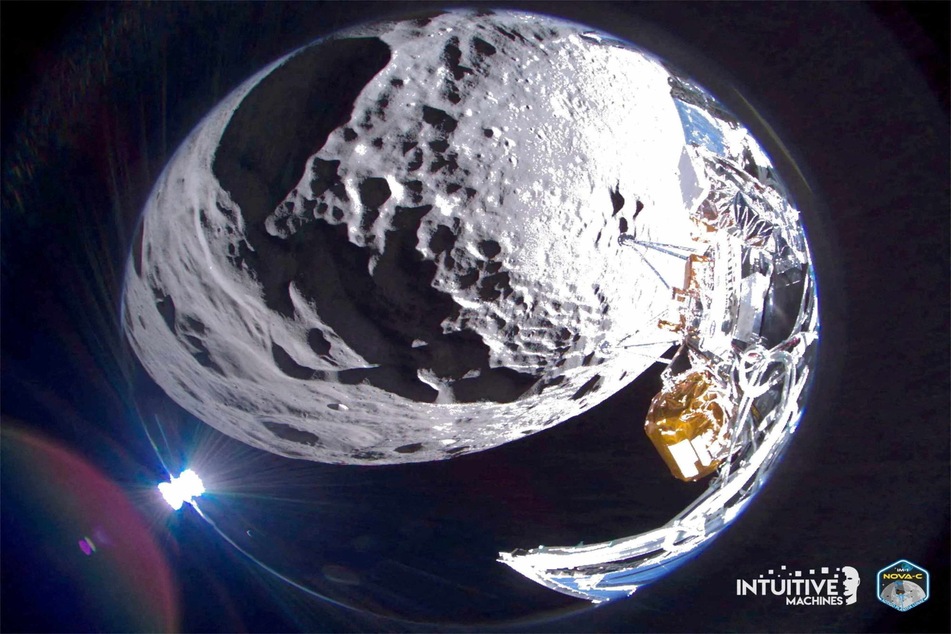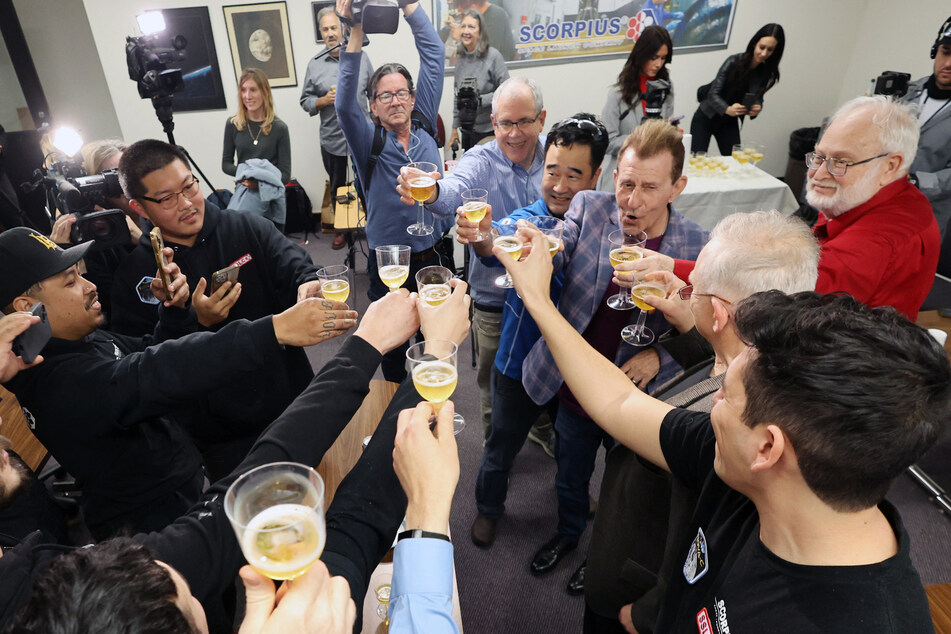Historic Moon landing mission cut short after mishap
After the historic return of the US to the surface of the Moon after more than 50 years last week, a private company’s lunar lander will likely have its space mission cut short because of how it landed.

Houston-based Intuitive Machines that managed to touch down on the Moon last Thursday with its Odysseus lander, but tipped over to one side, is not expected to be able to maintain power or communicate with mission managers beyond Tuesday, according to a statement from the company.
"Flight controllers intend to collect data until the lander’s solar panels are no longer exposed to light. Based on Earth and moon positioning, we believe flight controllers will continue to communicate with Odysseus until Tuesday morning," reads an update from the company’s website.
That’s bad news for NASA, which paid the company $118 million as part of its Commercial Lunar Lander Services program, which tasks private companies to build hardware capable of bringing payloads to the Moon. NASA has six payloads on board worth about $12 million that were aiming for eight to nine days of life before the sun set on that part of the Moon, although Intuitive Machines’ pre-launch target was seven days.
This means two to four days less life than planned.
How did Odysseus tip over on the Moon?

It’s also bad news for students and faculty at Daytona Beach’s Embry-Riddle Aeronautical University, which had one of six other non-NASA payloads on board, a set of cameras called EagleCam, named after the university’s mascot. EagleCam was originally designed to be ejected from Odysseus as it made its descent so that it could hit the lunar surface beforehand and capture Odysseus’ actual landing.
Because of issues with the lander’s navigation system that forced a change in how it landed, the decision was made to keep EagleCam in place.
And while company officials said the lunar lander likely had one of its landing gear catch and cause it to tip over to one side, plans were still in place to send EagleCam out so that it could at least get a photo of the lander and send that back to Earth.
Embry-Riddle’s team worked over the weekend after the change in plans concocting how it would be deployed as telemetry data indicated EagleCam was still fully operational. Troy Henderson, the faculty lead for EagleCam said in an Embry-Riddle press release that it expected it could be deployed out to somewhere between 9 and 15 feet from the lander. Images, though, would be transmitted back to the lander via Wi-Fi and then have to be transmitted back to Earth.
With the power loss timetable in place, it’s uncertain how much data will actually make it back from the mission.
Was the Spacecraft Odysseus a success?

An image of the lander’s location taken by NASA’s Lunar Reconnaissance Orbiter over the weekend revealed the exact landing spot, about 185 miles from the Moon’s South Pole. The lander came within about 1 mile of its original intended landing site near the Malapert A crater.
And Intuitive Machines revealed the first image sent by the lander since its landing, although it was of its descent to the surface just before landing.
"After understanding the end-to-end communication requirements, Odysseus sent images from the lunar surface of its vertical descent to its Malapert A landing site, representing the furthest south any vehicle has been able to land on the moon and establish communication with ground controllers," the company stated.
NASA said its final landing spot was within a small crater that had a 12-degree slope.
The efforts, though, still marked a success for commercial industry and NASA, and was hailed by President Biden. It became the first commercial lunar lander to stick the soft landing, despite the tipover. Two private landers from Israel and Japan were destroyed during their attempts in recent years.
It was the second of NASA’s long-delayed CLPS missions following the launch in January of Pittsburgh-based Astrobotic Technology’s Peregrine lander that never made it to the Moon, but was forced to return to Earth to burn up on re-entry after a propellant leak. NASA has seven more CLPS contracts in place, with at least two more expected to be announced this year.
Three of those seven CLPS missions are on the clock to fly this year, including another Nova-C lander from Intuitive Machines.
Less than half of all lunar soft landing attempts fail as well, although government efforts by both Japan and India in recent months managed successful landings, adding them to the small list of five nations that have managed to survive lunar landings.
The others are the US, Soviet Union, and China
Cover photo: Collage: DAVID SWANSON / AFP & via REUTERS &
